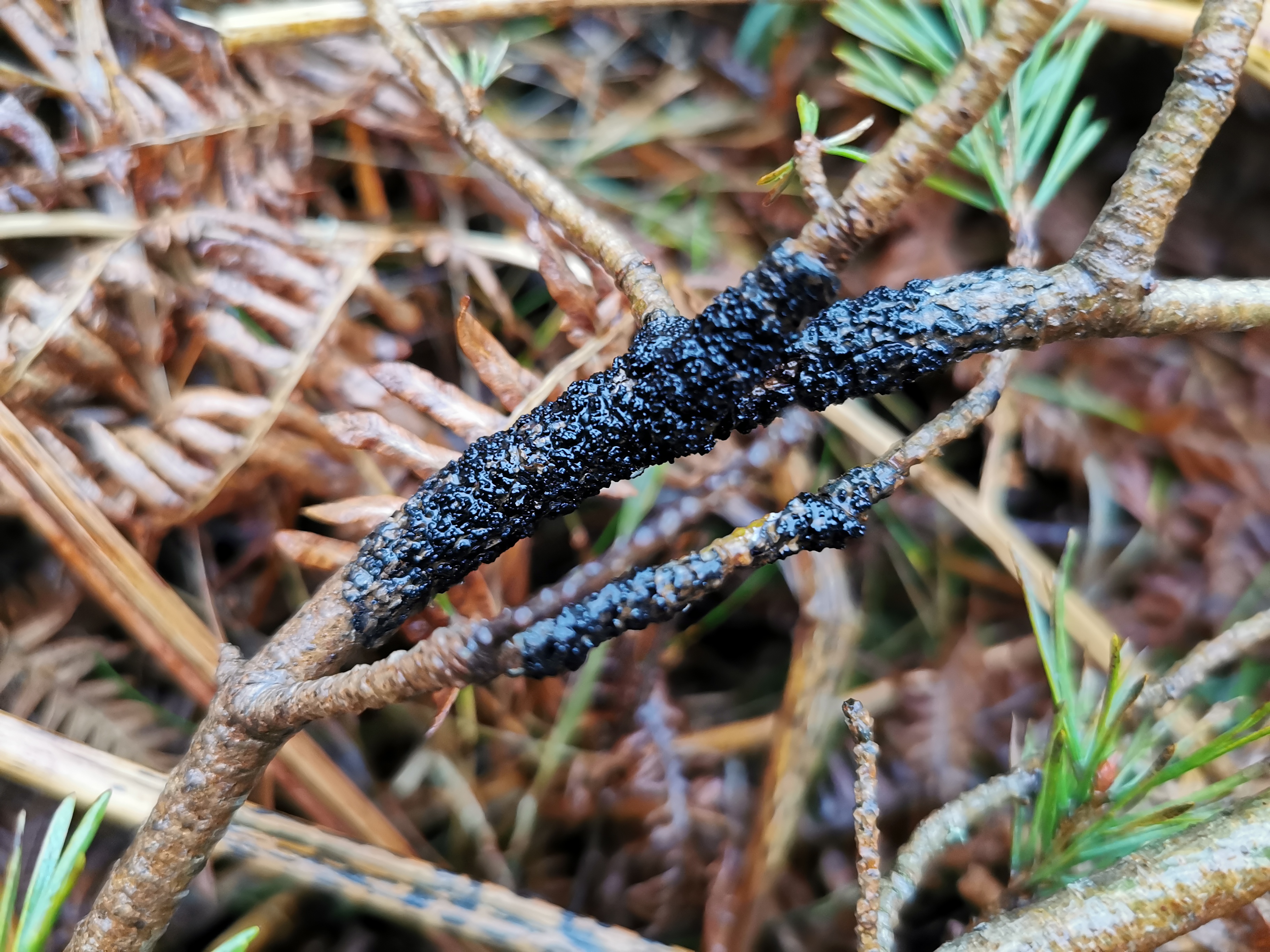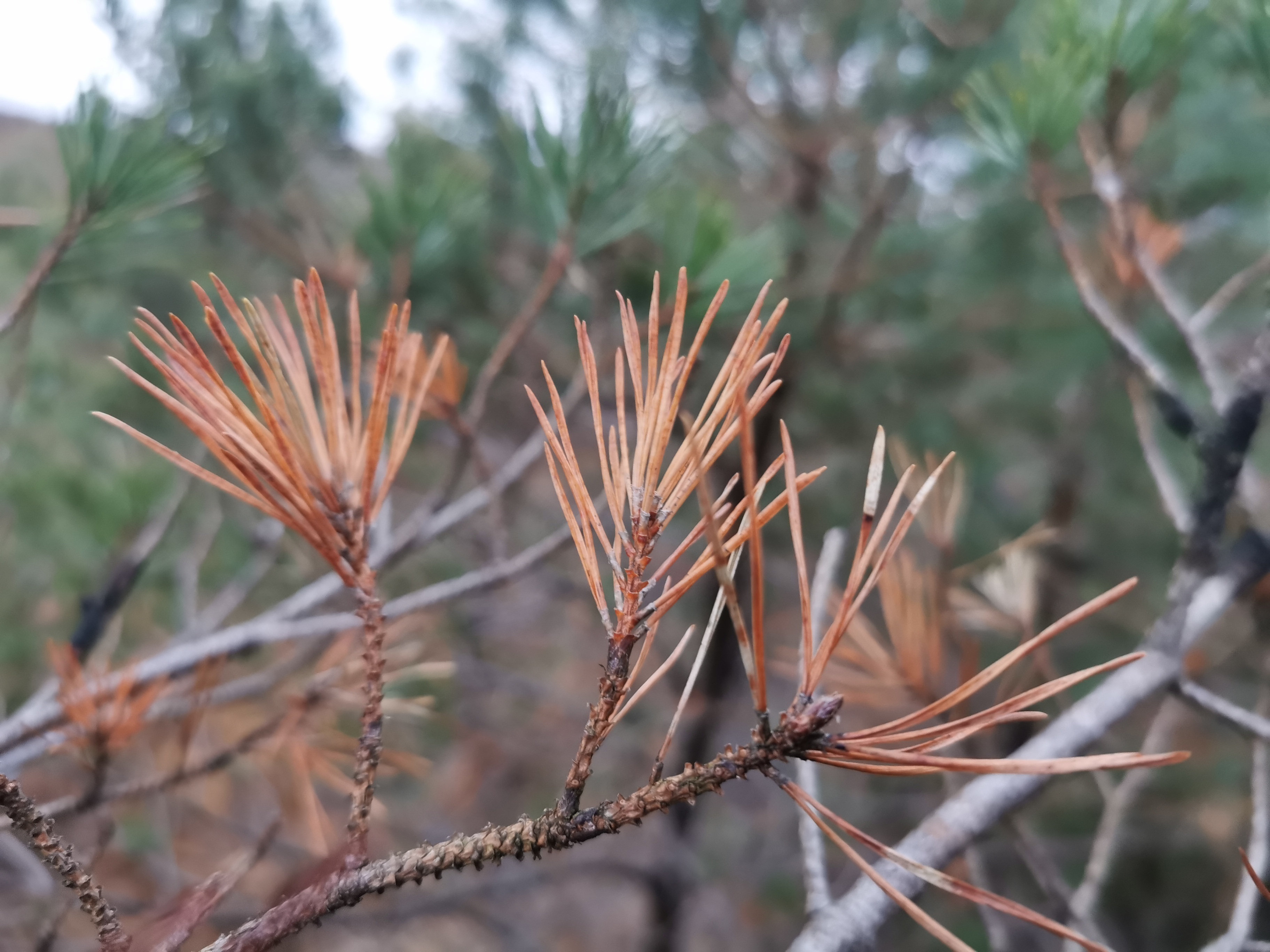22 Apr 2024
BLOG: Curreya pithyophila – what we know about it
There’s no doubt that it is becoming more of a challenge to protect our forests and woodlands from a growing range of tree pests and diseases.
There’s plenty of top- level research and surveillance going on and Scottish Forestry is working closely with Forest Research, and other UK governments to halt the march of many diseases.
One fungus that has cropped up in a few headlines is Curreya pithyophila, which we know can affect our national tree – the Scots Pine.
In this blog, Scottish Forestry’s Tree Health Policy Officer, Flora Donald, answers some of the key questions about Curreya pithyophila and whether we need to be worried about it at this stage.

(Photo: Ewan Purser, Scottish Forestry)
Is this a new tree disease to Scotland?
Well – it's not a straight answer – you could say yes or no!
The impacts we’re noticing are new but the ‘disease’ is really a symbiotic fungal-adelgid complex involving two native species and a previously rare fungus called Curreya pithyophila, which was actually first mentioned as occurring in Scotland way back in 1907.
It encases populations of our native pine woolly adelgid (Pineus pini) on tree branches, protecting the aphid-like insects from predation. The adelgid nymphs feed on the branch tissues and then, when they drop off, the wound sites are colonised by a secondary, native, canker-causing fungus called Crumenulopsis sororia.
A few records of Curreya pithyophila in association with P. pini were made in the 1960s in Deeside and Moray but the widespread distribution and cankering we’re now seeing is new.
Genetic analyses funded by the Plant Health Centre revealed two genetically different types of C. pithyophila are present in Scotland so we’re supporting researchers at Forest Research and the Royal Botanic Garden Edinburgh to explore if this could explain why the fungus is now more common.
Work is also underway to date the cankers and find out if they became more prevalent in different parts of the country at the same time.
How widespread is it?
It’s been found across mainland Scotland including parts of the south-west, north-west, east and central belt.
Only one other site has been found in the rest of the UK, in Devon. Samples sent to Forest Research last year confirmed C. pithyophila is present on a range of site types where Scots pine grows including native woodland, commercial, and amenity plantings, as well as in the Caledonian pinewood.
Which trees does it affect?
All confirmed findings found over the past two years have been on Scots pine (Pinus sylvestris).
Historically, C. pithyophila has been reported to occur occasionally on spruce and fir trees in Britain, although no verified records exist for these observations. Our Tree Health Officers will help Forest Research look for symptoms on these species over the summer but there’s currently no evidence to suggest it’s causing problems on these trees.

(Photo: Ewan Purser, Scottish Forestry)
Should we be worried about it?
Trees planted in suitable conditions still grow well. The fungal-adelgid complex causes progressive dieback of branches in the lower crown. Young Scots pine growing on wet sites they are poorly suited to appear to be the most vulnerable. We’re funding further research this year to understand the likely impacts of C. pithyophila across Scotland more fully, including the importance of climatic conditions for fungal establishment and spread.
What are we asking woodland managers to do regarding the disease?
As ever, we ask woodland managers to become familiar with the symptoms on Scots pine which are present as black cankers, often at shoot junctions, with multiple cankers on the same branch.
Photographs of symptoms and some interim management recommendations for those intending to plant Scots pine are published in a blog and project report on the Plant Health Centre website. Forest Research’s Principal scientist – pathology, Sarah Green, also released a video on WoodlandsTV called “How to identify Scots Pine Fungus Curreya pithyophila".
No specific action is required for Scots pine stands showing symptoms of C. pithyophila but we encourage everyone to report their sightings to TreeAlert so we can build up a wider picture of its distribution and impacts.